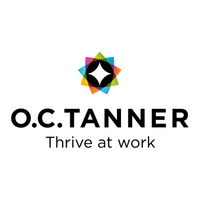The key elements of a winning hybrid employee experience

Career development
Employees may be spending less time in the office but they don’t want this to detriment their career development. They still want and expect to be able to learn new skills and develop their careers, and by providing this opportunity, the business also benefits. Organisations that prioritise career development for hybrid workers see increased likelihood of employee engagement (+115%).
Providing opportunities for hybrid workers to grow in specific areas, learn and practice new skills in their current roles, and work on special projects is therefore key for enhancing the employee experience. This could also include secondments and voluntary opportunities.
Flexibility
More than ever, workers are expecting greater flexibility. Hybrid employees feel that three days per week in the office is ideal because it allows enough time to meaningfully connect with their teams and organisational culture. Offering the opportunity for employees to work from home is important, but this must be balanced with office time in which employees can maximise collaboration time and realise the value of being together.
This move towards greater flexibility also impacts rewards and benefits. Office-based benefits such as an on-site café and in-person events are still needed for when employees are in the office and are looking for ways to interact with colleagues. And finding ways to keep remote workers connected and engaged also needs considering. Delivering recognition moments and ‘peak experiences’ both remotely as well as in person will be key here.
Clear expectations of availability
It’s all too easy to get work and home-life blurred when there are no longer clear lines differentiating the two. However, employees need to be able to switch off and as such, leaders and employees must work together to determine remote working hours, as well as expectations for working ‘after hours’ and at weekends. Being clear about what’s expected helps to prevent burnout. In fact, the probability of high engagement increases by 96%, leadership scores jump 121%, and wellbeing improves by 52%.
Connections
People who feel more connected to the organisation, their leaders and their team have better employee experiences. Prioritising ‘connection’ is therefore crucial for hybrid employees, especially during the times they’re not in the office.
Organisations shouldn’t assume that employees will create their own opportunities for connection, but should instead provide ways for all workers to feel connected both at home and in the office. This must include setting aside time for employees to network and gather socially. When organisations provide opportunities for employees to get to know each other on a personal level, there’s a greater chance of engagement, retention and inclusion.
A powerful way to keep people connected is through recognition – ensuring employees are given public, timely and meaningful recognition and rewards for everyday efforts, accomplishments and career anniversaries.
Not forgetting the silent majority
With more employees working in a hybrid way, it’s easy to forget the majority of workers who have always needed to be physically present at work and will continue to be so. These employees, who simply can’t work remotely, could be sidelined by HR leaders who are quick to provide hybrid working opportunities and benefits. It’s therefore key to fully understand your workforce – what are their particular needs and expectations? How do you ensure they’re always included and provided with engaging rewards and benefits?
The understanding must come first
As reward and benefits professionals figure out how to best respond to the needs and demands of hybrid workers, it’s vital to first understand the key elements of a winning hybrid employee experience. Focusing on career development, flexibility, expectations of availability and connections, can inform the reward and benefits strategy, providing greater certainty of success.
The author is Robert Ordever, managing director of O.C. Tanner Europe.
This article is provided by O.C. Tanner Europe.
Supplied by REBA Associate Member, O. C. Tanner
Giving teams the integrated tools they need when, where and how they need them.







